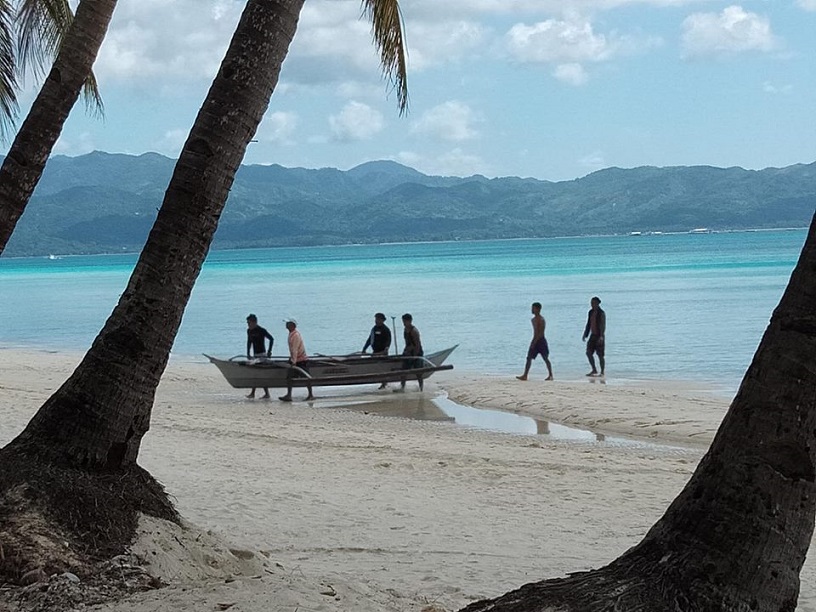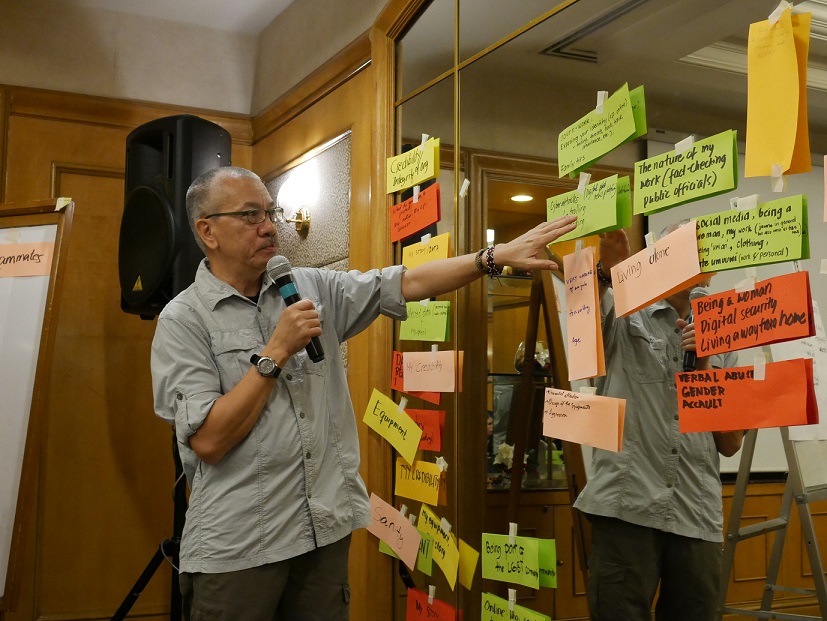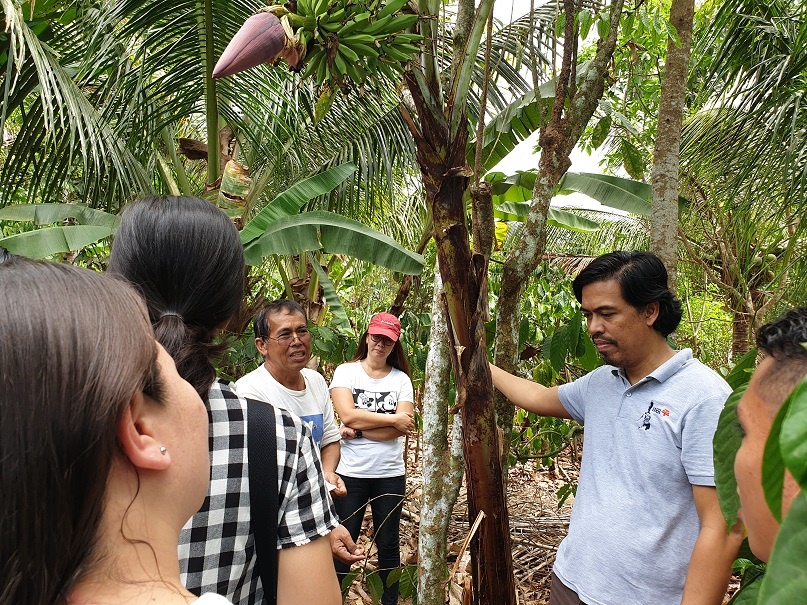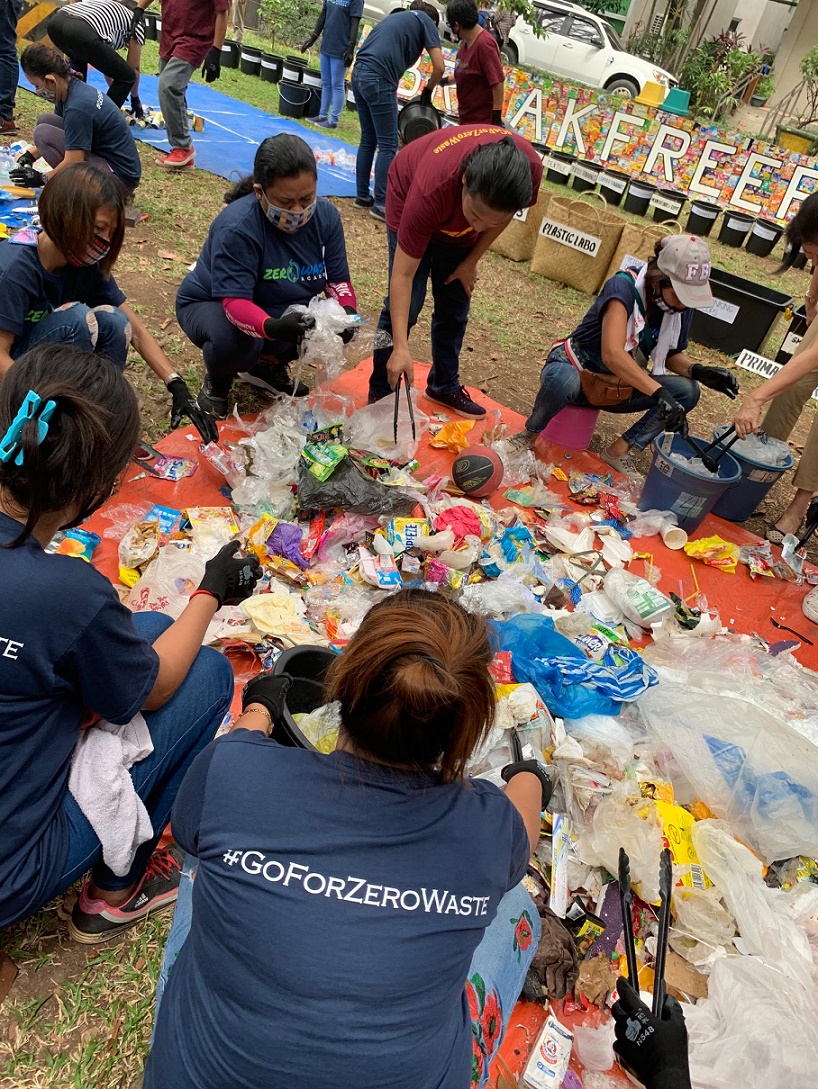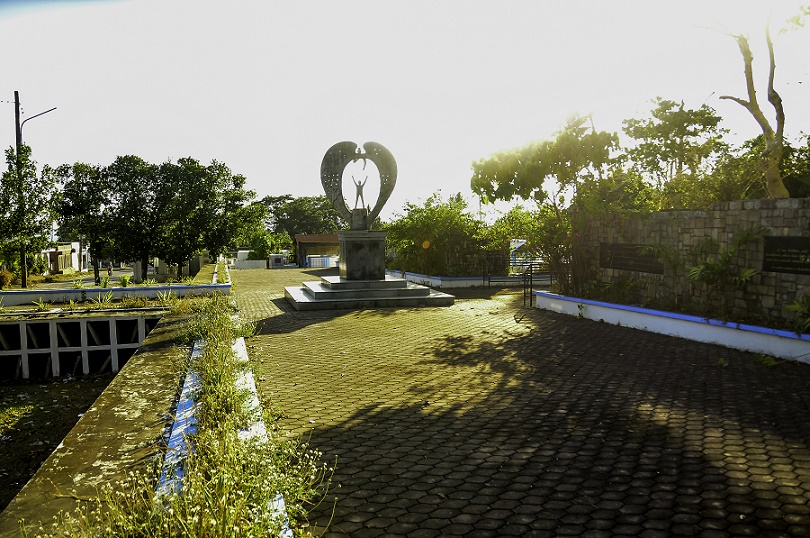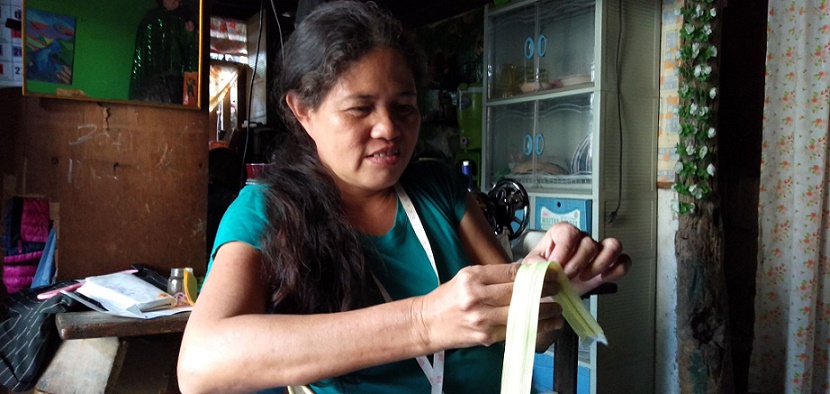
Ormoc flood survivor, Marilyn Hamito, a seamstress. Photo by Cooper Resabal.
ORMOC CITY – In an emergency, drop everything and run for your life.
Marilyn Hamito, a 46-year old seamstress, learned precisely this when floodwaters swallowed the riverside hut she shared with her mother and siblings on November 5, 1991 and drowned the rest of the city.
Hamito was 18 then. Her family lived near the wooden bridge crossing the Anilao River where she bathed and washed clothes.
On the day of the flood, she recalled that her mother initially insisted on packing the little valuables they had. But, when a neighbor warned that the water had already reached some barangays, her mother instructed the children “to drop everything and run up to higher ground without looking back.”
Dagan nga way lingi-lingi, she told the children in the local dialect.
Her two brothers, then 18 and 20 years old, braved the muddy current and luckily survived.
A neighbor who had an ice cream business went back for her sewing machine and piggy bank. She was swept by the floodwaters out to sea.
For Hamito, the lesson is clear – in an emergency situation, there is no choice but to run for your life; leave everything behind.
Ruel Sicsic
Ruel Sicsic, 46, lives in a hut atop the embankment adjacent to the Anilao River. From his home, Sicsic could still see the spot where his family used to live by the riverbed.
The Anilao River was only four meters wide 28 years ago. Today, that spot where his house once stood is already underwater.
Sicsic said they sought refuge in a “bigger house” only to literally jump to another one when its walls broke down under the surge of water.He could have been swept away had he not been able to cling to the stair bannister and climb to the upper floor.
Recalling that day, Sicsic said the onrushing waters was like a bulldozer ripping apart and hurling everything on its way- houses, logs, vehicles, and people out toward Ormoc Bay.
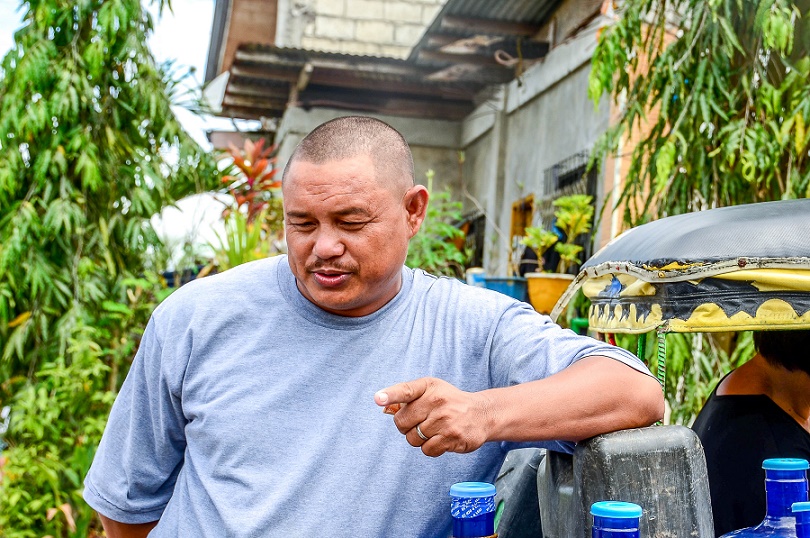
Survivor Reynaldo Manicor believes there’s a reason that he was saved and that he still has to fulfill a mission in life. Photo by Liza Macalandag.
Reynaldo Manicor
Reynaldo Manicor, 43, is also a flood survivor. He sells drinking water in JICA Lao relocation village.
To this day, Manicor is still bothered by the thought that had they been less attached to some material possession, more members of their family would have survived the flood.
He related that they had vehicles at their disposal. They could have packed everyone and driven to safety immediately. But because they tried to save their valuables, the rampaging waters caught up with them.
“We were already in the jeepney on our way to evacuate. What happened was we were met by the rushing flood waters. So, when our vehicle got toppled down, we got separated,” Manicor recalled.
He was rescued much later drifting in the sea. “I was very weak. There were lots of debris like wood which moved with the waves and hit my body hard. I had lots of scars from that,” he recalled.
“But I survived that, and I’m thankful to be alive,” Manicor said, now firm in the belief that he was saved to fulfill a mission in life.
His father also survived, but his mother and siblings aged 12, 10, and 4 were not lucky.
He shares the lesson that “Life is more important than your valuables or your appliances. You can always find ways to acquire things again, but not the lives of your loved ones.”
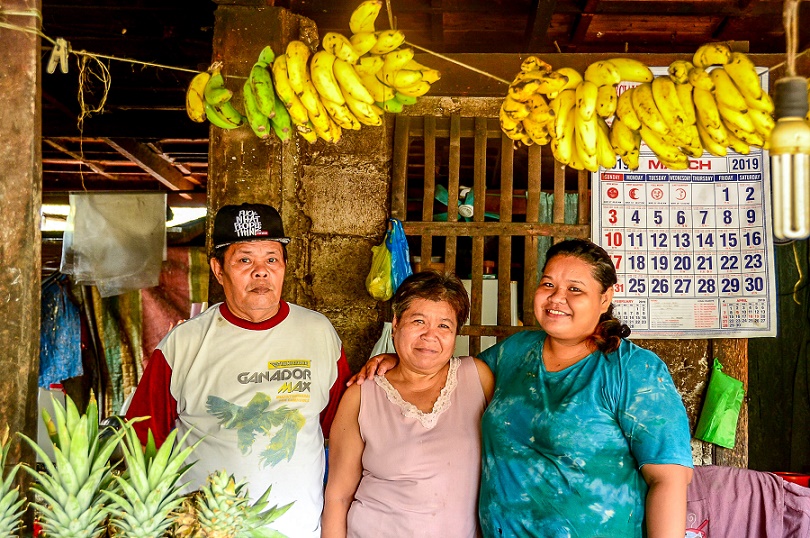
Survivor Nenita Ablen (center) with husband (left) and child (right) who was 2-months old during the floods. Photo by Liza Macalandag.
Nenita Ablen
Nenita Ablen, 53, lives in JICA Lao village tending a sari-sari store, which is part of relocation assistance given to survivors of the Ormoc flood.
Her little girl was barely two months old when the flood hit; thankfully, her husband was able to save her and the baby.
“My husband came back for me, swam after me. I was lucky he was still able to rescue me. My daughter, she was just two months old during the flood. We even thought that maybe she already died because we were really drenched in the water. “
“When we reached OSPA (the hospital), I looked at the baby who had turned blue, and I really thought that she had died. But we were lucky. Look at her, she’s all big and grown up now. We really are survivors,” Ablen chuckled.
From that experience, Ablen learned that she can’t have second thoughts about saving loved ones even at the risk of losing our own life. It might be the only chance you get, she said.
Not everyone was able to get the chance to save their loved ones, unfortunately.
Sicsic recalled having rescued a man who was sobbing inconsolably because his child and wife were washed away. “You know what he did? He jumped back into the water. He died,” he said.
Experiencing the deluge and fighting to survive the raging waters was difficult, but the survivors soon learned that picking up the pieces left of their lives demanded more endurance and strength.
“We thought that was already the worst experience, the flood, but the aftermath was also really bad. Our area stank of death. There were dead bodies all over the place,” Sicsic recalled, still wincing at the memory.
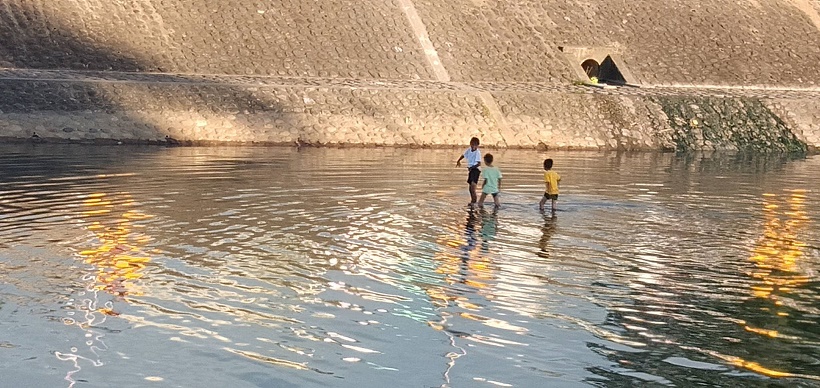
Children wading through Anilao River unaware of the grim happening in that site 28 years ago. Photo by Cooper Resabal.
Cause of the killer flood
Like many Ormocanons, Sisic believes that deforestation of the watershed was the primary cause of the flood. “The trees that were cut down, that was one of the causes that aggravated the flooding. Those mountains, that turned white (because) the trees have been cut down. And those debris from the logging activities, they were washed down here, and the logs were really the ones that hit our homes.”
The Ormoc City Ecological Profile (2015) indicates that the city environment in 1991 was aggravated by the degradation of the watershed area and the presence of settlements along the Anilao and Malbasag Rivers, including Ormoc Bay which serves as the final discharge area of the two rivers.
Sicsic said Ormocanons are now “aware about the ill-effects of deforestation.”
Manicor took note of the measures the local government undertook to prevent occurrence of the disaster. “I think, Ormoc is okay now. Our river is now very wide. Not like before when it was full of houses that were very close to each other. Now, that’s no longer allowed,” he said.
“And dikes have been built. If a similar volume of water would come, we’d be safe. The government has made sure of that. The people now also understand when they are told to evacuate from their homes that are very near the river,” he added.
There’s no more effective teacher than a personal encounter with disaster.
(This story is produced by VERA Files under a project supported by the Internews’ Earth Journalism Network, which aims to empower journalists from developing countries to cover the environment more effectively.)
